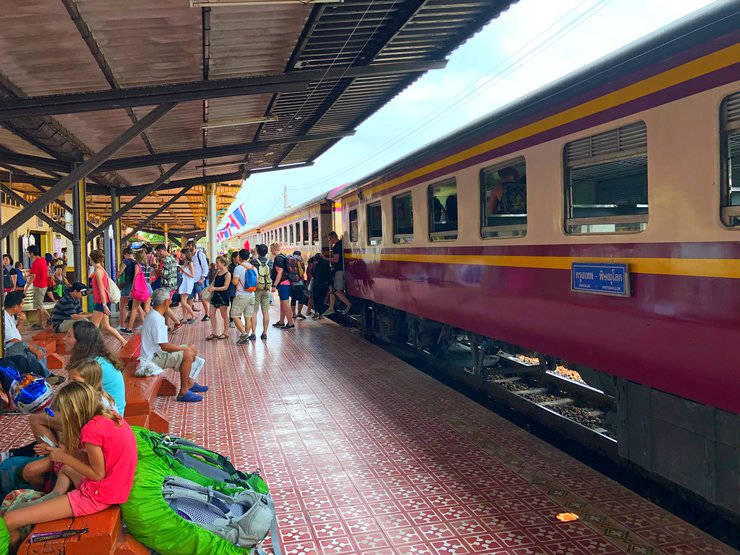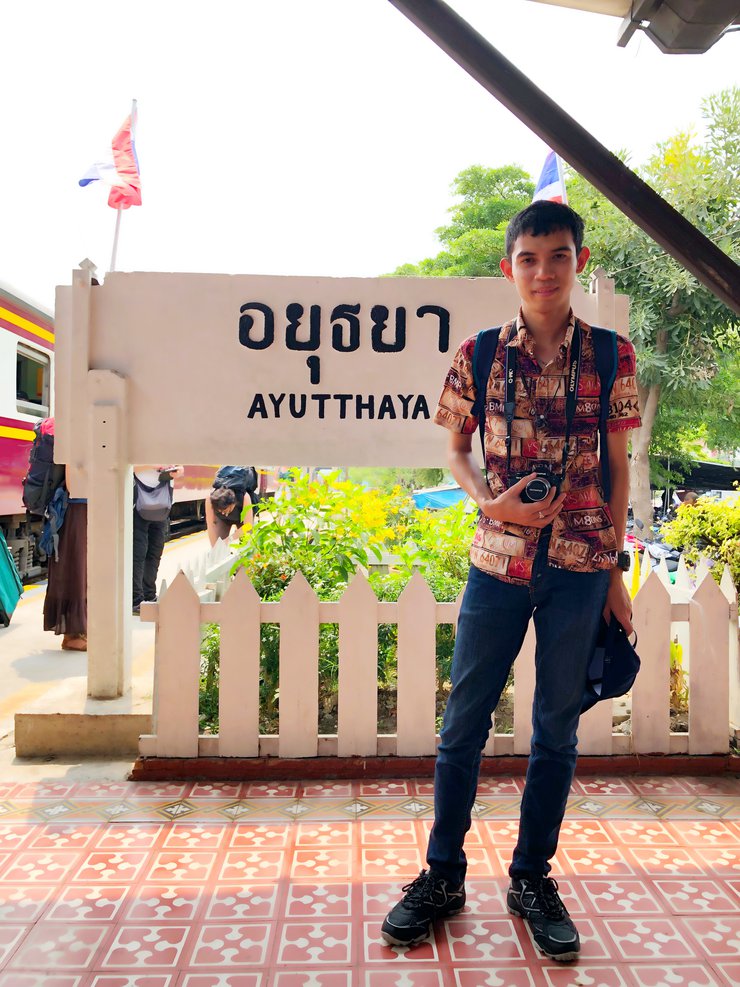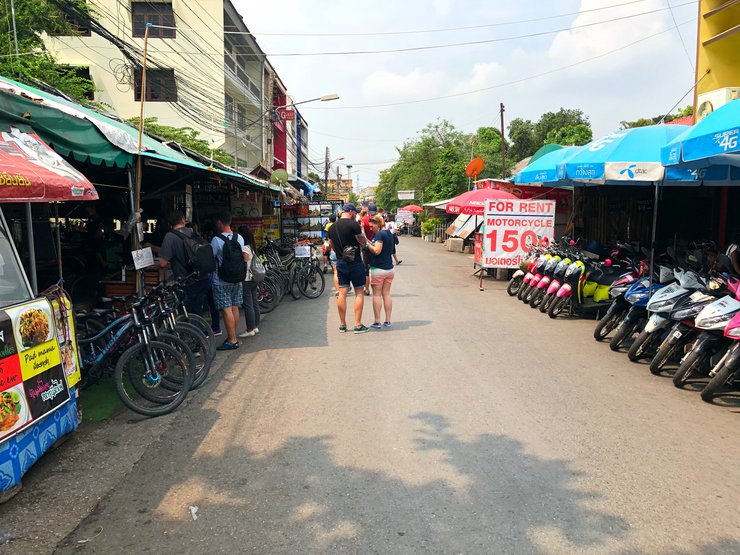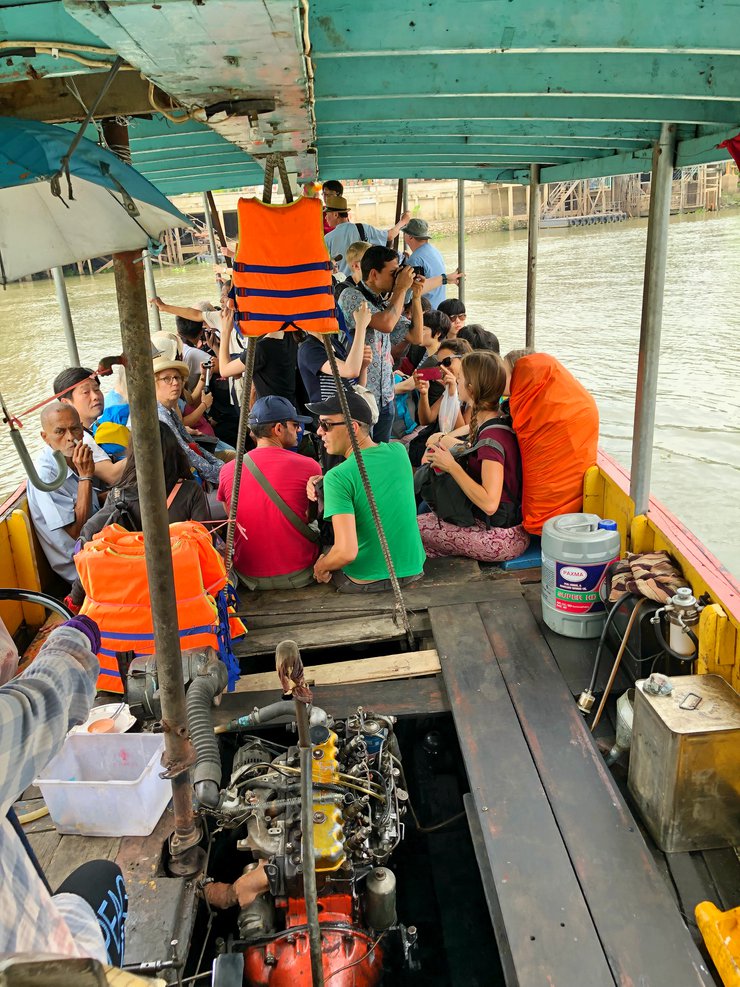When mentioning Ayutthaya, many Thais are well aware that it was once the ancient capital of Thailand, with great prosperity in the past. However, it was destroyed by war, leaving behind numerous traces of civilization for present-day people to study and explore. It has become one of the world's most famous tourist destinations. Moreover, Ayutthaya Historical Park has been designated as a World Heritage Site, under the category of cultural heritage.
Ayutthaya, founded in 1351 by King Ramathibodi I, served as the capital of the ancient Siamese kingdom. This once-thriving metropolis met its demise in 1767 when the Burmese army invaded, plundering its treasures and artistic wonders. Today, Ayutthaya stands as one of Thailand's oldest cities and a renowned tourist destination, captivating visitors with its rich history and cultural heritage. Designated a UNESCO World Heritage Site, Ayutthaya Historical Park embodies the evolution of authentic Thai art, offering a glimpse into the kingdom's glorious past.

The journey to Ayutthaya began on an ordinary train departing Don Mueang Railway Station at 10:30 AM. The fare was 11 baht per person. Ticket prices vary depending on the type of train and destination. Several train types are available, including commuter trains, ordinary trains, express trains, rapid trains, special express trains, and CNR special express trains. Tourists can find schedules and fares on the website of the State Railway of Thailand: www.railway.co.th.
My journey commenced at Don Mueang Railway Station, where I embarked on a train to Ayutthaya. The train departed at 10:30 a.m., with a fare of 11 baht per person for a one-way trip. The fare varies depending on the destination and type of train. The State Railway of Thailand offers various train categories, including ordinary, rapid, express, and special express. For detailed information on fares and timetables, please refer to the official website: www.railway.co.th.

Ticket Inspector

The train journey from Bangkok to Ayutthaya took approximately one hour, culminating at Ayutthaya Train Station.

The first thing to do upon arrival is to take a photo with the Ayutthaya Train Station sign.

After exiting the train station, I crossed the street and walked straight into an alleyway to catch a ferry to Ayutthaya Island. In this alleyway, there are shops renting bicycles and motorcycles, or you can rent them on Ayutthaya Island as well. I chose to rent on Ayutthaya Island for the convenience of travel. The ferry fare is only 5 baht per person per trip.
The journey to Ayutthaya City begins at the train station. After crossing the road, one enters an alleyway leading to the boats. While bicycle and motorcycle rental shops are present in the alley, renting within the city is recommended for convenience. The boat fare is a mere 5 baht per person, making it an affordable and scenic mode of transportation.

This is the boat I took to cross to Ayutthaya City.

Upon reaching the shores of Ayutthaya Island, you will encounter bicycle and motorbike rental shops. Bicycle rentals cost 50 baht per day, while motorbikes cost 200 baht per day. I opted for a motorbike rental for the day due to the scorching weather, as cycling would have been too strenuous. The rental shop provided a map of Ayutthaya Island, highlighted important landmarks, and offered their contact information in case of getting lost. The rental shop requires the return of the vehicle before 6:00 PM.
Upon arriving in Ayutthaya City, I encountered numerous bicycle and motorcycle rental shops. Bicycle rentals were priced at 50 baht per day, while motorcycles cost 200 baht per day. Due to the sweltering heat, I opted for a motorcycle rental, fearing exhaustion from cycling in the high temperatures. The rental provider furnished me with a tourist map and recommended key attractions for my visit. Additionally, they provided their contact number in case I became lost. However, the rental agreement stipulated a return time before 6:00 p.m.

The first place I visited was Wat Mahathat.
Wat Mahathat was a very important temple during the Ayutthaya period. It housed the Buddha's relics in the heart of the capital and was also the residence of the Supreme Patriarch. The temple was destroyed after the second fall of Ayutthaya.
Inside the temple, you will find the ruins of the war, including bricks, plaster, and Buddha statues. These ruins are considered valuable because they are a place for young people to learn about history.
Wat Mahathat is open daily from 8:00 a.m. to 6:00 p.m.
Entrance fee is 10 baht.




I understand that you want me to translate the sentence "Please Translate


The sentence is already in English and does not require translation.

The sentence is already in English and does not require translation.

The most striking feature of this temple is the Buddha head entwined by the roots of a banyan tree. This iconic image has become a popular subject for photographs among tourists.


The sentence is already in English and does not require translation.

I understand that you want me to translate the sentence "Please Translate

The sentence is already in English and does not require translation.



The Temple of Wat Phra Si Sanphet
Wat Phra Si Sanphet was a royal temple within the ancient palace grounds of Ayutthaya. The temple's most striking feature is the trio of Lanka-style stupas aligned along its east-west axis.
As a royal temple within the palace grounds, Wat Phra Si Sanphet did not house any monks. Instead, it served as a venue for significant ceremonies and housed the cremated remains of nearly every Ayutthaya monarch. In terms of its importance, Wat Phra Si Sanphet can be compared to Wat Phra Si Rattana Satsadaram in Bangkok or Wat Mahathat in Sukhothai.
Wat Phra Si Sanphet is open daily from 8:00 AM to 6:00 PM. The entrance fee is 10 Baht.
Wat Phra Si Sanphet: A Temple of Splendor and History
Wat Phra Si Sanphet, meaning "Temple of the Holy, Splendid Omniscient," once stood as the holiest temple within the ancient Royal Palace of Ayutthaya, Thailand's former capital. This magnificent structure served as the spiritual heart of the kingdom until the city's tragic destruction by the Burmese in 1767.
Prior to its demise, Wat Phra Si Sanphet was renowned as the grandest and most beautiful temple in Ayutthaya. Its architectural grandeur served as a model for other revered temples, including Wat Phra Kaeo in Bangkok and Wat Mahathat in Sukhothai. Today, the temple's ruins stand as a poignant reminder of Ayutthaya's glorious past and the impermanence of even the most magnificent structures.
The temple served as a royal sanctuary, reserved exclusively for ceremonies of the royal family. Unlike other temples, it was not inhabited by monks.
The temple is open daily from 8:00 am to 6:00 pm. The entrance fee is 50 baht.








The next stop is a visit to the reclining Buddha at Wat Lokayasutharam. The highlight of this temple is the largest reclining Buddha statue in the city of Ayutthaya. Admission to this temple is free.
This temple, known as Wat Lokkaya Sutharam, boasts the distinction of housing the largest reclining Buddha statue in Ayutthaya.


After spending time in Ayutthaya Island, I traveled to Wat Chaiwatthanaram. This temple is located on the west bank of the Chao Phraya River outside Ayutthaya Island. We may often hear news that this temple will be flooded during the rainy season. Therefore, a flood wall has been built to prevent flooding in the temple area, which could damage ancient sites or artifacts.
The Royal Temple of Chaiwatthanaram
Chaiwatthanaram Temple was constructed during the reign of King Prasat Thong in 1630 CE. The king ordered its construction on the site of his former residence as a dedication to his mother. However, Prince Damrong Rajanubhab theorized that the temple was built to commemorate the victory over the Kingdom of Lovek, drawing inspiration from the Angkor Wat temple complex.
This royal temple has served as a place for successive monarchs to perform meritorious deeds. Before the fall of Ayutthaya, Wat Chaiwatthanaram was also converted into a military camp.
Wat Chaiwatthanaram: A Historical and Cultural Gem
Opening Hours: Daily, 8:00 AM - 6:00 PM Entrance Fee: 10 Baht
Wat Chaiwatthanaram, a Buddhist temple situated on the west bank of the Chao Phraya River in Ayutthaya, stands as a testament to the city's rich history and cultural heritage. This iconic landmark, located outside Ayutthaya Island, attracts visitors from around the globe, captivating them with its architectural grandeur and spiritual significance.
Built in 1630 by King Prasat Thong, the temple served as both the first of his reign and a tribute to his mother's former residence in the area. The architectural style reflects the then-prevalent Khmer influence.
The following is a translation of the provided text:
Wat Chaiwatthanaram served as a royal temple where the king and his successors conducted religious ceremonies. Historically, it also held defensive significance.
Temple Information
The temple is open daily from 8:00 AM to 6:00 PM. The entrance fee is 50 baht.









After visiting the temple, it was time for lunch. I went to eat boat noodles with my legs dangling, which is called "boat noodles with dangling legs" because the tables at the restaurant are designed with dangling legs and pillows for us to lean on. The boat noodles start at 15 baht and go up to 450 baht. I guarantee that they are delicious and will satisfy you. Enjoy delicious food while dangling your legs and enjoying the cool breeze. It's definitely worth it.
The restaurant is located in front of Ayutthaya Hospital, on the banks of the Chao Phraya River. It is open from 8:30 AM to 8:00 PM. After 6:00 PM, the restaurant will not sell small bowls of noodles (15 baht).
Following my temple explorations, hunger pangs led me to seek sustenance. I stumbled upon a noodle restaurant named "Kuay Tiew Ruea Hoy Kha," which translates to "hanging legs seated on a triangle pillow." This establishment offers a unique dining experience, inviting patrons to savor their noodles while perched on triangular pillows with dangling legs. The ambiance is guaranteed to be both flavorful and comfortable, creating a truly memorable culinary adventure. Noodle prices range from 15 to 450 baht, catering to diverse budgets.
The restaurant is situated across from Ayuthhaya Hospital on the banks of the Chao Phraya River.
It operates daily from 8:30 AM to 8:00 PM.
Kindly note that 15 baht noodles (small bowl) are unavailable after 6:00 PM.



After finishing lunch, I glanced at my watch and realized I had two hours to spare before returning the rental car. I decided to visit the Queen Suriyothai Monument, located at Tung Makham Yong, a former battleground between Thailand and Burma. The monument commemorates the historical event where Queen Suriyothai engaged in a duel with King Bayinnaung, ultimately sacrificing her life on the elephant's back.
The following is a translation of the provided text:
After finishing lunch and checking the time, I realized I had more than two hours before returning my motorcycle. I decided to take a trip to the Monument of Queen Sri Suriyothai.
The monument commemorated Queen Sri Suriyothai, who valiantly defended her kingdom in an elephant battle during the Burmese-Siamese War of 1548–1549.

On my way back to Ayutthaya Island, I stopped at Wat Na Phra Meru, which is located on the banks of the Lopburi River outside the island of Ayutthaya to the north, opposite the Royal Palace.
Wat Na Phra Meru is the only temple in Ayutthaya that was not burned down by the Burmese and is still in very good condition because the Burmese used this temple as their headquarters. The principal Buddha image in the temple's ubosot is a large, cast bronze Buddha image in royal attire, named "Phra Phuttha Nimitrawichit Mara Moli Si Sanphet Borommatrailokanat." It is considered one of the most beautiful bronze Buddha images in royal attire in Ayutthaya.
During my return trip to Ayutthaya Island, I made a stop at Wat Na Phra Men, a temple of paramount significance. Remarkably preserved in its original state, it stands as the sole temple to have escaped destruction at the hands of the Burmese invaders. Ironically, the Burmese utilized the temple's vantage point to bombard the fortified city with cannons.



My journey through Ayutthaya has come to an end. I returned the rental motorcycle and paid an additional 35 baht for fuel. I then took a ferry across the river to the train station to catch the 6:30 p.m. train back to Bangkok.
Due to time constraints, I was unable to explore every nook and cranny of Ayutthaya. Several intriguing locations remain unvisited, including Wat Rachaburana, the Elephant Camp, the Royal Palace, and the Elephant Kraal.

Travel expenses summary
Round-trip train fare = 44 baht
Motorcycle rental = 200 baht
Round-trip ferry fare = 20 baht
Fuel costs = 35 baht
Admission fees = 60 baht
Lunch = 250 baht
Total expenses = 609 baht
Total cost per person: 304.50 Baht
Trip Expenses:
- Train Fare: 44 Baht
- Motorcycle Rental Fee: 200 Baht
- Boat Fee: 20 Baht
- Fuel: 35 Baht
- Attraction Entrance Fee: 60 Baht
- Lunch: 250 Baht
Total Cost: 609 Baht
Expenses per person: 304.50 Baht per person.
go see write เล่าเรื่องเที่ยว
Monday, November 11, 2024 10:32 AM




















